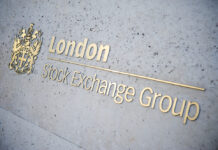Although occasionally dismissed as a ‘myth’ amongst analysts, a Santa Rally is a statistically visible rise in stock prices over the month of December in the run up to Christmas.
Whilst the reasons for this increase in stocks are not exactly known, the head of investing at Axa Wealth, Adrian Lowcock suggests;
“It is probably down to mixture of reasons, including fund managers repositioning their portfolios ahead of the year end or goodwill associated with the festive season putting professional investors in a positive mood.”
The effects of the Santa Rally aren’t unnoticed within the FTSE 100, with December being an average four times more profitable than the average months across the markets.
So what patterns in the market do the Santa Ralley leave?
The growth in returns doesn’t see a slow and steady growth throughout November and December. Instead, the last two years have seen the markets drop in points during the first half of December, following a significant rise from approximately the 15th throughout the rest of the month, sometimes into January.
Considering the FTSE 100 stock market over the past ten years, there has been an average growth between 15th December – 1st January of 160.29 points, with the smallest growth being +19 points in 2007.
This rally hasn’t always positively impacted the markets. The blue-chip index fell by 2.3pc in December 2014; the first December fall in the FTSE 100 for 12 years. This is compared to the most successful year seen by the Santa Rally in 1987, where the markets saw a rise of 8.4pc.
Whilst Santa Rallies have been seen to regularly occur and cause growth in the market, it is not encouraged to make wholesale changes just to take advantage of short-term trends, which is often considered costly.
Safiya Bashir on 07/12/2015




